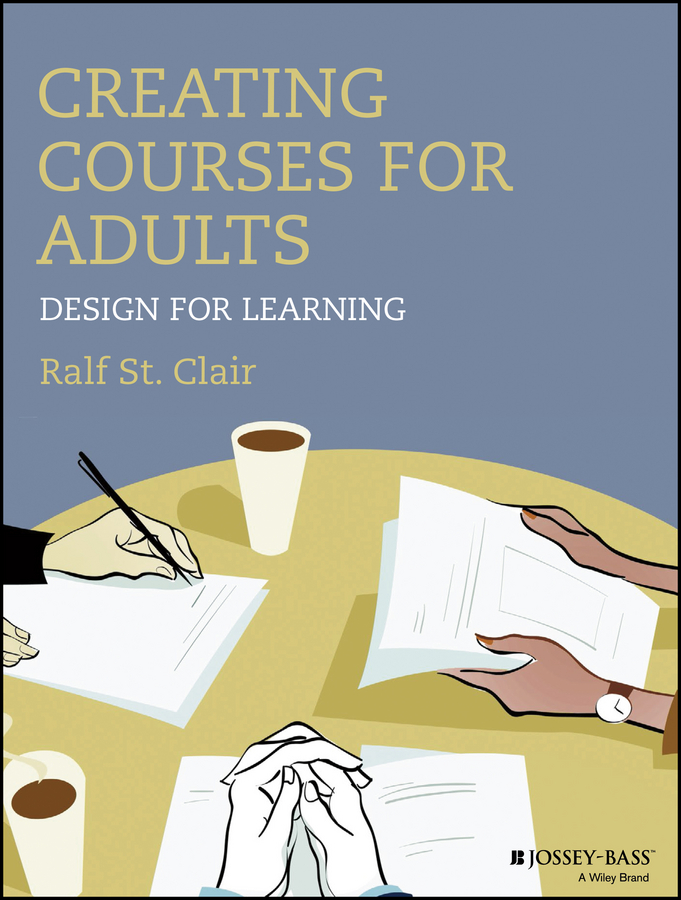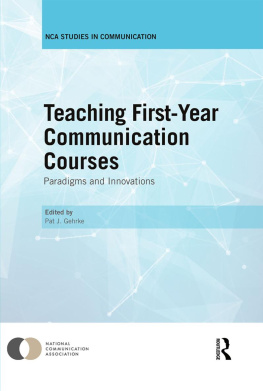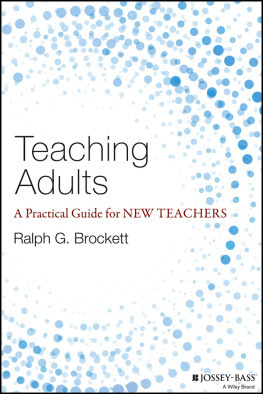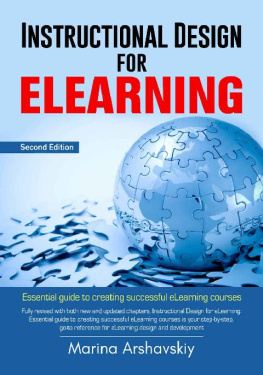
Cover design by Wiley
Cover illustration: McMillan Digital Art/Getty
Copyright 2015 by John Wiley & Sons, Inc. All rights reserved.
Published by Jossey-Bass
A Wiley Brand
One Montgomery Street, Suite 1000, San Francisco, CA 94104-4594www.wiley.com, www.josseybass.com/highereducation
No part of this publication may be reproduced, stored in a retrieval system, or transmitted in any form or by any means, electronic, mechanical, photocopying, recording, scanning, or otherwise, except as permitted under Section 107 or 108 of the 1976 United States Copyright Act, without either the prior written permission of the publisher, or authorization through payment of the appropriate per-copy fee to the Copyright Clearance Center, Inc., 222 Rosewood Drive, Danvers, MA 01923, 978-750-8400, fax 978-646-8600, or on the Web at www.copyright.com. Requests to the publisher for permission should be addressed to the Permissions Department, John Wiley & Sons, Inc., 111 River Street, Hoboken, NJ 07030, 201-748-6011, fax 201-748-6008, or online at www.wiley.com/go/permissions.
Limit of Liability/Disclaimer of Warranty: While the publisher and author have used their best efforts in preparing this book, they make no representations or warranties with respect to the accuracy or completeness of the contents of this book and specifically disclaim any implied warranties of merchantability or fitness for a particular purpose. No warranty may be created or extended by sales representatives or written sales materials. The advice and strategies contained herein may not be suitable for your situation. You should consult with a professional where appropriate. Neither the publisher nor author shall be liable for any loss of profit or any other commercial damages, including but not limited to special, incidental, consequential, or other damages. Readers should be aware that Internet Web sites offered as citations and/or sources for further information may have changed or disappeared between the time this was written and when it is read.
Jossey-Bass books and products are available through most bookstores. To contact Jossey-Bass directly call our Customer Care Department within the U.S. at 800-956-7739, outside the U.S. at 317-572-3986, or fax 317-572-4002.
Wiley publishes in a variety of print and electronic formats and by print-on-demand. Some material included with standard print versions of this book may not be included in e-books or in print-on-demand. If this book refers to media such as a CD or DVD that is not included in the version you purchased, you may download this material at http://booksupport.wiley.com. For more information about Wiley products, visit www.wiley.com.
Library of Congress Cataloging-in-Publication Data
Library of Congress Cataloging-in-Publication Data has been applied for and is on file with the Library of Congress.
ISBN 9781118438978 (paper); ISBN 9781118746905 (ebk.); ISBN 9781118747056 (ebk.)
Dedication
The Jossey-Bass Higher and
Adult Education Series
Preface
The big idea of this book is that education for adults has to be designed. Whether it's a one-hour class on wine tasting or a four-month language course, there are some key decisions that must be made as the course is crafted. One striking thing about teaching is that people tend to see it as easyuntil they have to do it. This is not a mistake that we make about skydiving or baking a cake. I think that this often happens because people's favorite teachers have done a pretty good job and did not seem to struggle too much. By its very nature, good teaching conceals all the thinking, planning, and decision making that goes on behind the scenes in order to present participants with a seamless and natural-feeling process. This is impressive, but it's not very helpful when you are trying to do it yourself and provide a good educational experience to another person or group of peoplethen the behind-the-scenes action takes on a whole new importance and urgency. The purpose of this book is to open the curtain a little on the backstage work and provide insights into the way that good teachers of adults do what they do and, equally important, why.
This book is aimed at people who want to learn more about putting together courses for adults. If you are new to teaching, it'll take you through the key decisions you will need to make in planning and delivering your course. If you have a little experience, the book will give you an opportunity to reflect on your approach and come to some new perspectives. Educators make many decisions that seem natural but that have important implications for our teaching and learning practices, including how much people in our classes can actually learn. This book starts from the position that nobody is an intuitive or completely natural teacher and that all teachers have to make a series of choices as they put courses together. The decisions they make are important and far-reaching and deserve to be considered carefully.
For me, one of the most important aspirations is to be a responsible educator. This does not mean that you are serious all the time, or that you are a perfect teacher. It does mean, however, that you take the role of educator seriously and try to find ways to fulfill that role as well as you possibly can. It means thinking about what went well, or not so well, in your teaching and how you will respond to that. And it means starting off with a plan that is backed up with justification and good decision making. As educators we are responsible for the way a group of people feels about a topic or about themselves as learners, and we need to rise to that responsibility.
There's an old story about a man whose car breaks down in a small town in the mountains. He calls a mechanic, and a grizzled old guy turns up in dirty overalls with a cigarette hanging out of the side of his mouth. He looks at the car and says he can fix it for $300. The man, many miles from home, feels he has no choice, and agrees. The mechanic walks back to the truck, gets a big hammer, comes back to the car and hits the engine. The car starts immediately, and purrs like a kitten. Hey! says the man. I'm not paying you $300 for hitting my engine with a hammer! The mechanic replies, No, you're not. You're paying $5 for the hit and $295 for knowing where to hit it!
To me, this story seems like a good analogy for teaching. All too often we see the hit but not all the knowledge that goes into shaping it. And just like in the story, the true value of teaching is not the act of teaching but all the thought, preparation, and experience that lies behind it. This book sets out to give you a way to think through questions about where the hammer should be directed to get the car started. It may not give you $295 worth of knowledge right away, but I hope it will provide a starting point.
The use of design as the central idea of this book is a deliberate choice. We live in a world permeated with human design (if you look around at this moment, I'd be surprised if you can see one object that is not designed), but we do not think about it too much. Even the simplest objects, such as a sheet of paper, have been deliberately designed to look as they do. What size should it be? How dense? How thick? Should it have lines? Should it have added clay to make it shiny? Should there be recycled content? If we want to think about the world around us, it seems to me that a key step is recognizing the degree to which things are designed and the decisions that have to be made during that process. The same applies to teaching. The many decisions that have to be made during course planning and delivery can seem overwhelming, and thinking about it as a problem of design can help to get the issues under control and impose some kind of organization.
Next page








